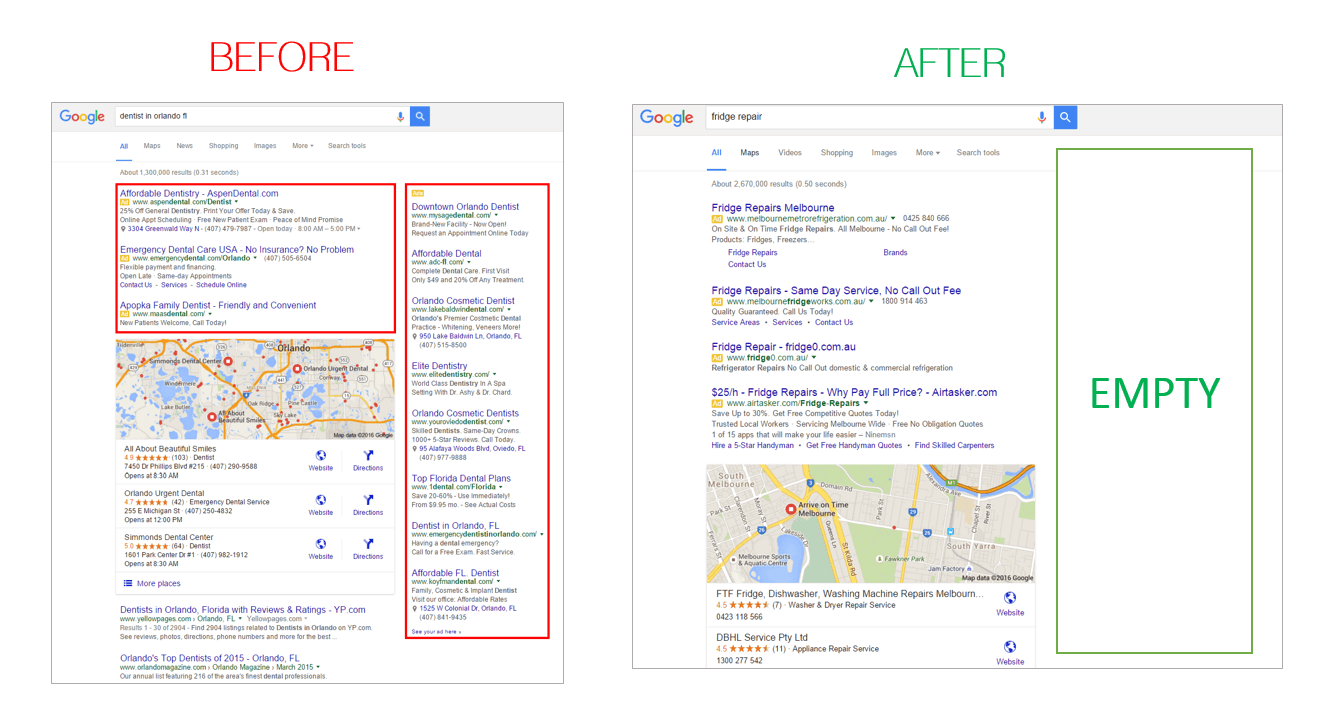Just last Friday, February 19th 2016 to be precise, Google announced a significant change to the way Ads will display in search results.
From now on there will no longer be ads displayed on the right hand side. Instead, there will now be up to four ads in top positions above the natural search results or google map listings. And there will be three text ads at the bottom of the search page.
All these changes are now live globally for google.com properties as well as their search partner sites.
What’s changing and what’s not changing
Here are some before and after shots

Why So Suddenly?
Well in fact Google has been testing four results in top positions since 2010 and eye witness testimonies have been somewhat more frequent and verified than UFO sightings!
So what does this mean for business and advertisers?
As with any change it will take time for the dust to settle and see how it practically impacts the advertising landscape. I have paraphrased some observations made within Australia’s largest Google Partner forum:
Ah so many questions, so little answers – for now!
Concluding Remarks
This is no doubt a big game changer for some, especially those who are used to the old way of managing AdWords with little strategic guidance.
However necessity tends forces positive change and no doubt this will get many business and advertisers thinking how to advertise and do business smarter – which isn’t bad after all.
Our hope is that this will be a catalyst for businesses to think of ways beyond advertising to attract and build their audience by taking ownership over the interactions with their target market, for instance by building up an email database and then USING IT; or prop up and engage more with the business’s social media following.
For our clients, we see this as a positive change as it only reinforces our methodology of always aiming for top position through the combination of strategic and constant bidding changes, better quality ads and more beneficial user experiences once visitors land on the site.
Through all of our analyses of ad position, those ads that are on top of search results consistently perform TEN TIMES better (and more) than the ads that appear on the right hand side. For example, we see ads that appear on the side attract a click through rate of below 1%, but those in top positions 10%+ and sometimes attracting lower costs per click during some time periods.
Plus ads in top positions will still be more prominent if you engage in the Ad Extensions available, which still is under utilised in some industries.
How do you see this changing the way online advertising works? Do you think it’s a bad move or a move in the right direction? Let us know in the comments section below.
If you are interested to discuss ways how to use AdWords more effectively, please get in touch with us for a frank chat on how to get more out of your Google AdWords.
If you want more updates like these, send your details securely to info@digitalautopilot.com.au with a subject line “updates”.